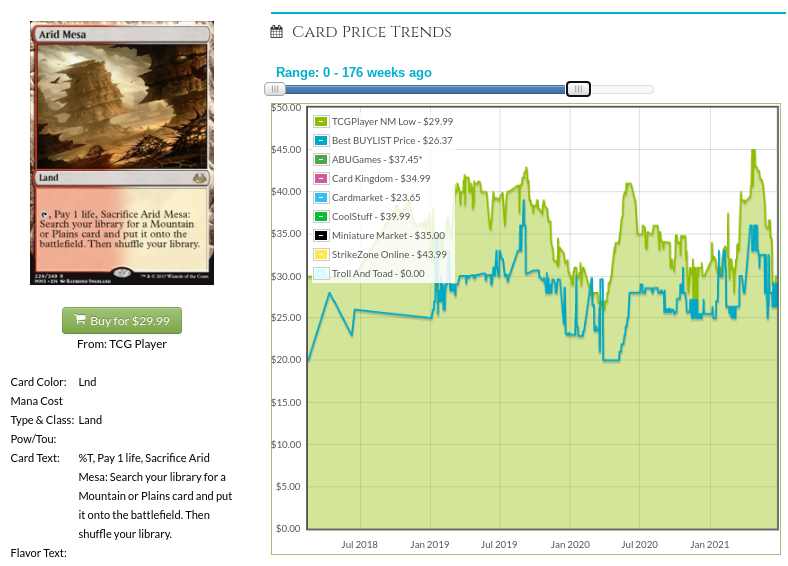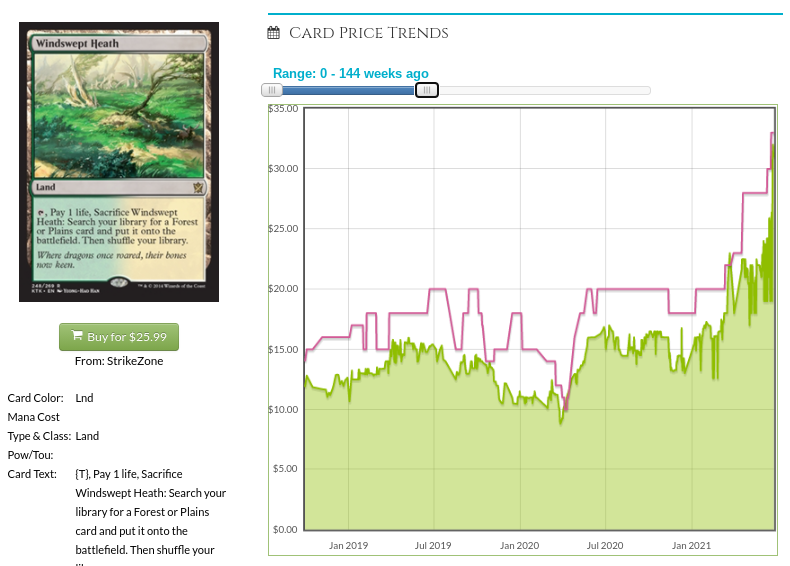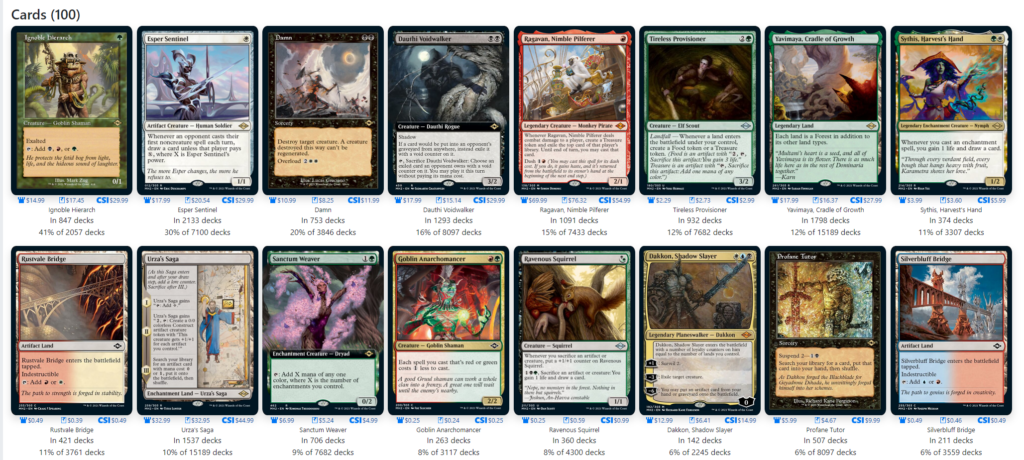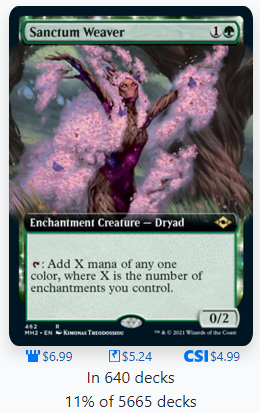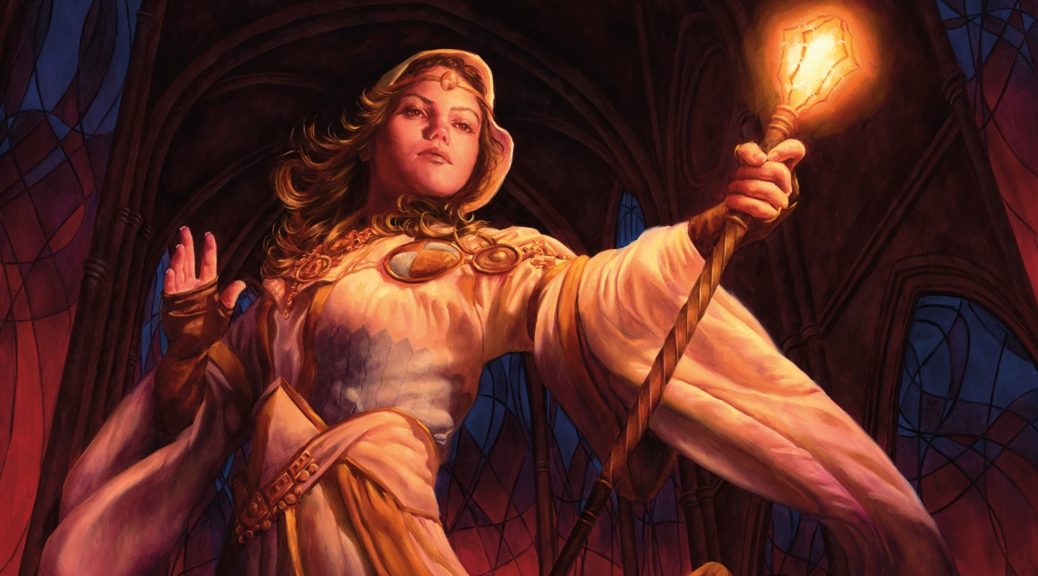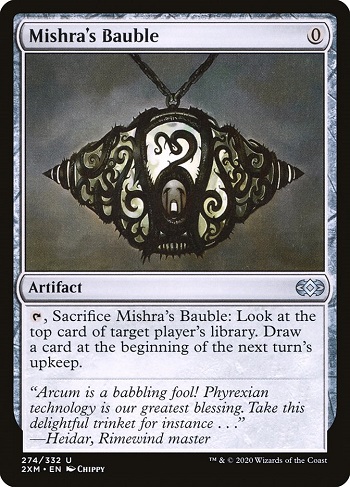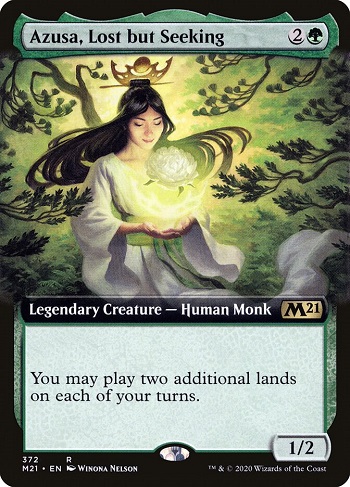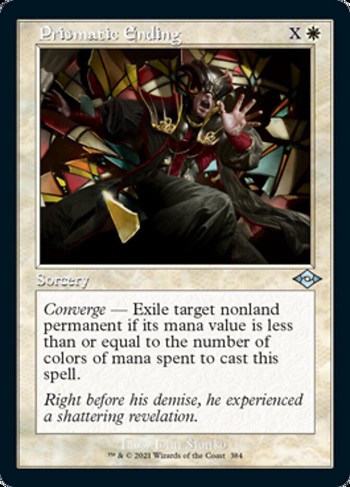Last week I talked about Modern, this week I’m talking about Modern, next week…I may well be talking about Modern again. It’s a great format and there’s so much diversity in the meta right now with all of the new cards from Modern Horizons 2 – nothing seems completely overpowered or dominant (but the Urza decks are certainly close to being top dog right now), and so there are a lot of opportunities for us to explore.
Kroxa, Titan of Death’s Hunger (Secret Lair)
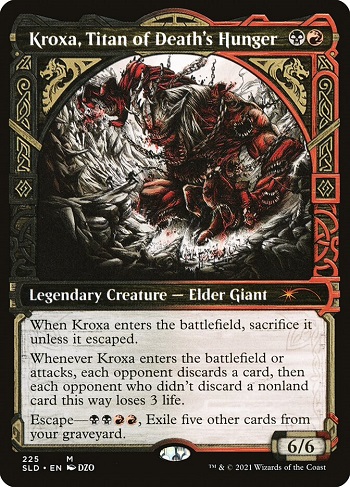
Price today: $40/$45
Possible price: $70/80
Kroxa has been a relatively important part of multiple formats for a while now, and has made its way into a few different Modern decks along the way. Most recently, a new evolution of the BR aggro deck has made its way to the forefront of the meta with Dragon’s Rage Channeler and Ragavan at the helm – both of which have been separately heralded as the best red one-drop of all time (although we know that Magic players are a little prone to hyperbole).
Either way, Kroxa is doing well in this deck alongside some others as well and on top of all that it’s quite a popular EDH card to boot. 1100 decks as the commander and a further 3000 in the 99, and we only have two premium versions of the card at the moment – the original EAs from Theros Beyond Death, and the Secret Lair versions. The FEAs are over $120 with very low supply now, but both foil and non-foil Secret Lairs are around $40-45, which I think is a decent entry point considering the card’s popularity now.
Especially since Uro got banned from multiple formats, Kroxa is the Titan of choice now and if you want a premium copy – either foil or non-foil – then your options are starting to run thin. I think that these non-foils should be good to run up over $60 before long at all, and the foils driving higher still. Prices are fairly similar in Europe, as expected, but supply isn’t much higher there either and will continue to drain.
On Thin Ice (Foil)

Price in Europe: €5 ($6)
Price in US: $13
Possible price: $20
Now that Sterling Grove has been printed into Modern in MH2 along with the new cards Sanctum Weaver and Sythis, Harvest’s Hand, it seems that Enchantress might actually be a real deck in the format. It’s been a Legacy deck for quite a long time – never dominating but always there at tier two-ish, and now it looks to be doing similar things in Modern.
Taking a look at the different iterations people have been playing, there are a reasonable number of flex slots in the deck and a few cards that remain consistent. One of those is On Thin Ice, a card that we only ever had printed in MH1 and so supply is really on the low side. It’s a four-of in the deck and is very efficient removal that keeps your enchantment count high over something like Path to Exile, and so is perfect for the deck.
Foils have already started to pop off in the US where paper play is a little ahead of Europe, where foils are dragging behind a little at €5-6. I think that this is a good arbitrage opportunity that might not be readily apparent, as it’s not a particularly flashy or exciting card – but it’s good all the same. There are only 29 NM foil listings left on TCGPlayer, and if the Enchantress deck remains relevant in Modern I think this is a sure thing to hit $20 in the next few weeks or so.
Æther Vial (The List)
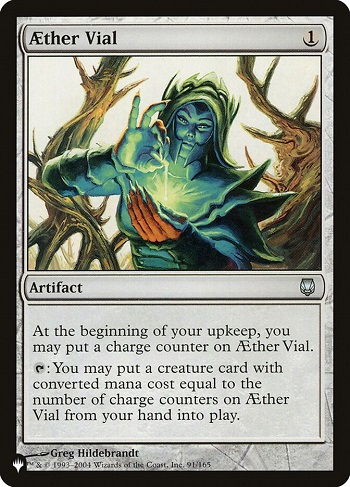
Price in Europe: €25 ($30)
Price in US: $45
Possible price: $50
I don’t want to harp on about arbitrage opportunities too much, but stuff like this is just too good to pass up, especially when you’re likely to be selling them in playsets. There are multiple Æther Vial decks doing well in Modern at the moment, including Humans, Merfolk and D&T/Stoneblade, and they’re all running four Vials. We’ve had a few different printings of Æther Vial now and they’ve all been trending upwards, but copies from The List in particular have been dragging their heels in Europe.
There are only 17 NM copies left on TCGPlayer, and this is the cheapest version out of Europe at the moment so I think this should just be some good clean arbitrage. Holding for a little longer could well net you even more profit as well, but either option looks pretty solid right now. If you’re thinking about getting into an Æther Vial deck in Modern any time soon then you’ll want to pick your Vials up sharpish, because they’re only going up until we see another printing.
David Sharman (@accidentprune on Twitter) has been playing Magic since 2013, dabbling in almost all formats but with a main focus on Modern, EDH and Pioneer. Based in the UK and a new writer for MTGPrice in 2020, he’s an active MTG finance speculator specialising in cross-border arbitrage.


